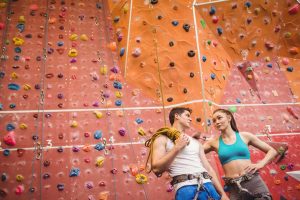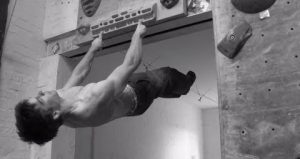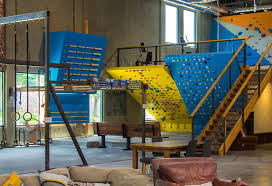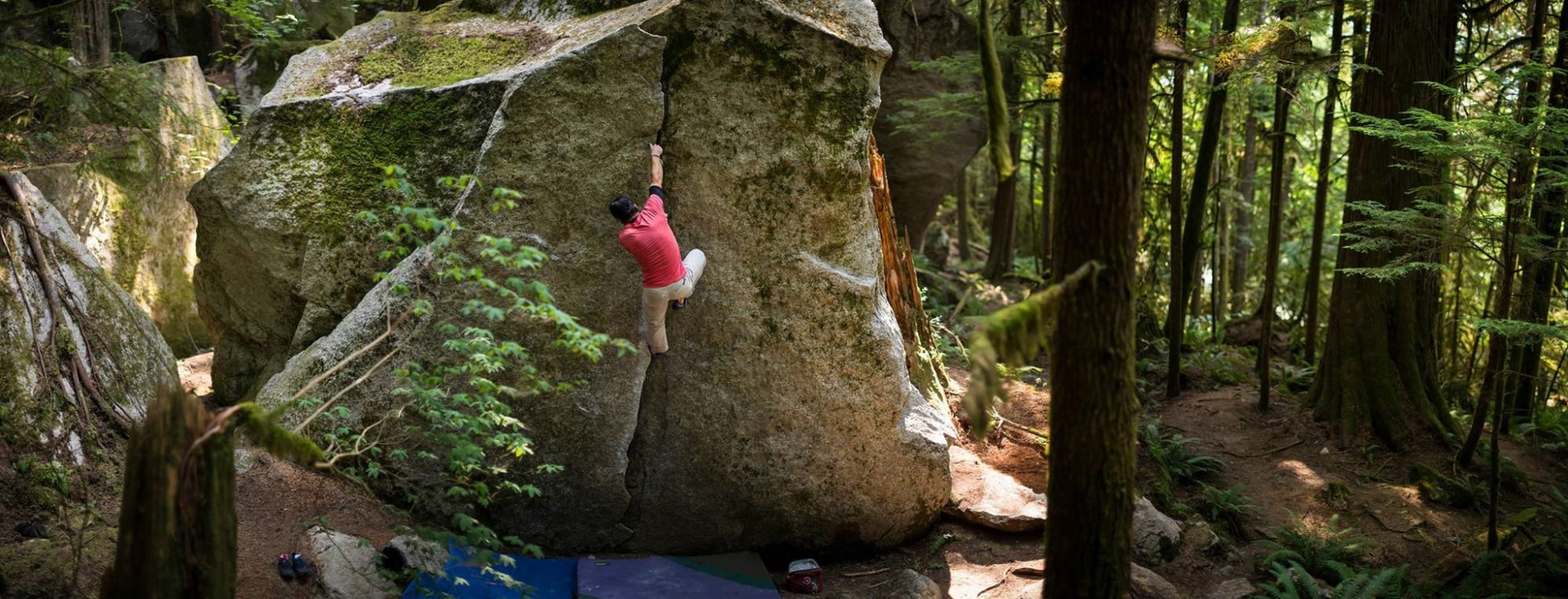This post is the first of a series of articles that will deal with the topic of training for climbing. But, before we even get into the any of the training content in this and future posts, let’s get some issues out of the way that I think need to be addressed before we can really discuss this topic and begin to formulate some training principles that are both logical and appropriate.
 Most people who call themselves climbers (as opposed to those who “just climb”) are, more or less, “average” people, perhaps with a physiological, psychological and genetic predisposition toward some sort of athletic ability. In using the term “average” I am referring to all aspects of people and their lives, such as physiology and psychology as well as lifestyle elements. It is quite apparent that climbers are different from the “average” population with respect to some aspects, such as general health and fitness (considering the average populace is overweight and approaching obese according to BMI). It should also be quite apparent that in other respects, such as many lifestyle elements, they are closely aligned with the “average” population. More importantly though, for training for climbing, is to be aware that most climbers are “average” in virtually ALL aspects in comparison to the current crop of genetically predisposition-ed, 95th+ percentile, professional climbers. Maybe this is obvious but I feel it is often over-looked and often under-estimated.
Most people who call themselves climbers (as opposed to those who “just climb”) are, more or less, “average” people, perhaps with a physiological, psychological and genetic predisposition toward some sort of athletic ability. In using the term “average” I am referring to all aspects of people and their lives, such as physiology and psychology as well as lifestyle elements. It is quite apparent that climbers are different from the “average” population with respect to some aspects, such as general health and fitness (considering the average populace is overweight and approaching obese according to BMI). It should also be quite apparent that in other respects, such as many lifestyle elements, they are closely aligned with the “average” population. More importantly though, for training for climbing, is to be aware that most climbers are “average” in virtually ALL aspects in comparison to the current crop of genetically predisposition-ed, 95th+ percentile, professional climbers. Maybe this is obvious but I feel it is often over-looked and often under-estimated.
This “average-ness” compared to the professional climbers impacts training for climbing in two main ways.
Firstly, as “average” people we are looking to get as much out of our training for as little input as we can. This is not to say that we won’t work, or even work hard, just that if we are going to work really hard then we want to see really good results. We are far too busy (usually) with real life, jobs, family, social requirements, to want, or be able, to put in inordinate amounts of time and energy for less than optimal results. We may not even really have the inordinate amount of time to put in even if the results were really amazing. We want to maximize the results while minimizing the time. We want the “best bang for our buck”.
Secondly, as average climbers we need and want average workouts. By “average workouts” I don’t mean easy, minimized or boring workouts, I mean workouts that are logically structured, achieve what they are designed to achieve and have realistic and attainable goals. The business related SMART acronym can be readily be utilized in this case; workouts should be Specific, Measurable, Attainable, Relevant and Timely. It’s great to see what workout Adam Ondra is doing but that’s really not going to work well for the “average” climber.
 The other important issue that needs to be addressed is the balance between what we ultimately want as climbers and how quickly we want it. Most climbers want to get stronger and they all want to get stronger now! This seems especially evident for people for whom climbing is their main physical activity. Unfortunately, for most climbers (average and non-average alike) once they reach a certain level of competence, the process of improvement is going to be slow. Accept it and you’ll be far less injured. Any training principles or regimen for climbing needs to be very aware of this or else injuries occur. Clearly, one of the main principles of any training program is adaptation due to progressive overload but worse than a poor or slow training program is injuries. Injuries will virtually always cause the longest delays in attaining your goals.
The other important issue that needs to be addressed is the balance between what we ultimately want as climbers and how quickly we want it. Most climbers want to get stronger and they all want to get stronger now! This seems especially evident for people for whom climbing is their main physical activity. Unfortunately, for most climbers (average and non-average alike) once they reach a certain level of competence, the process of improvement is going to be slow. Accept it and you’ll be far less injured. Any training principles or regimen for climbing needs to be very aware of this or else injuries occur. Clearly, one of the main principles of any training program is adaptation due to progressive overload but worse than a poor or slow training program is injuries. Injuries will virtually always cause the longest delays in attaining your goals.
That out of the way, I believe that the best, overall climbing training program is going to include all of the elements you’d probably expect with a substantial consideration on the issues discussed above. The program needs to be targeted at the appropriate group (average climbers); needs to be structured to achieve the best outcomes for the least input (the SMART principles help here); needs to be mindful of slow but steady gains while remaining, largely, injury free.
So what are the training for climbing elements?
Firstly and foremost, just climbing. Pretty obvious and simple and it covers a lot of the issues outlined above, especially the “average-ness” issue. Essentially all beginners and most intermediate climbers will get the most benefit from their input from just climbing. A good balance of volume and difficulty in the climbing you do. It can include both route climbing and bouldering, though I would probably argue for a bouldering focus if the intent is truly for training to get better at climbing.
 Secondly, finger board and or campus board (once you’ve reached a certain level of baseline finger strength). This is not really advisable for beginners, the risk of injury is too great and they will still get more benefit for their input from just climbing. Once you’ve reached an intermediate level of ability then fingerboard routines, largely just dead-hangs, will begin to give you a good benefit for your input. For advanced climbers it’s going to be even more evident that some level of finger training will be needed to improve, certainly quicker than from just climbing alone. The campus board can fit in here as well, at least from the intermediate ability level and definitely for the advanced ability level.
Secondly, finger board and or campus board (once you’ve reached a certain level of baseline finger strength). This is not really advisable for beginners, the risk of injury is too great and they will still get more benefit for their input from just climbing. Once you’ve reached an intermediate level of ability then fingerboard routines, largely just dead-hangs, will begin to give you a good benefit for your input. For advanced climbers it’s going to be even more evident that some level of finger training will be needed to improve, certainly quicker than from just climbing alone. The campus board can fit in here as well, at least from the intermediate ability level and definitely for the advanced ability level.
Thirdly, weight training (though arguably interchangeable with finger board and campus board in terms of importance). Especially heavy weights for building strength without size. I would argue strongly that all ability levels of climbers would benefit from doing a weights routine. Even weight training just once a week will reap benefits that are balanced with the level of input required. This might not be to the level of benefit seen for the input from climbing for beginners but all other ability levels should see benefits for their input the equivalent of any of the other elements of training. And, if you really enjoy doing a weights routine, at any level of climbing ability, then I believe it is well worth doing.
And lastly, some baseline level of cardio. This is probably the only training mode that might have more benefit for beginners for the input with a reducing benefit for the input level as climbing ability increases. Still, if you are an intermediate or advanced climber and somehow have a relatively poor cardiovascular output then adding some cardio is probably a good thing (be careful not to confuse lack of strength for a lack of endurance). If you like doing cardio then that’s a bonus. If you don’t like a lot of cardio then I would not do a lot of cardio. You can even just modify a climbing day to be a cardio climbing day, focusing on easy routes or a long traverse bouldering day quite easily.
 One final point I want to make. I’ve used terms describing climbers as being of beginner, intermediate and advanced ability levels. I define beginner, intermediate and advanced climbers by a combination of both actual climbing ability (grade) as well as how long they’ve been climbing. I believe both are equally important. Beginners are pretty much less than 1 year, almost irrespective of ability. Intermediates are 1 to 3 years with ability in the sub-V6 range, sub 5.12, though the closer to the grade limits the less time you need to have been climbing. Finally, advanced are 4+ years with ability in the V6+ or 5.12+ range, though if you don’t climb those grades but have been climbing a long time (a decade?) then you’re probably advanced. These are clearly rough guides but give you an idea of the factors to consider.
One final point I want to make. I’ve used terms describing climbers as being of beginner, intermediate and advanced ability levels. I define beginner, intermediate and advanced climbers by a combination of both actual climbing ability (grade) as well as how long they’ve been climbing. I believe both are equally important. Beginners are pretty much less than 1 year, almost irrespective of ability. Intermediates are 1 to 3 years with ability in the sub-V6 range, sub 5.12, though the closer to the grade limits the less time you need to have been climbing. Finally, advanced are 4+ years with ability in the V6+ or 5.12+ range, though if you don’t climb those grades but have been climbing a long time (a decade?) then you’re probably advanced. These are clearly rough guides but give you an idea of the factors to consider.
That’s the basic principles I believe in for training for climbing. I believe it has a lot of support in current scientific literature as well as support from a lot of professional climbing trainers. Future posts will contain more detailed outlines of each of the particular modes of training for climbing.





